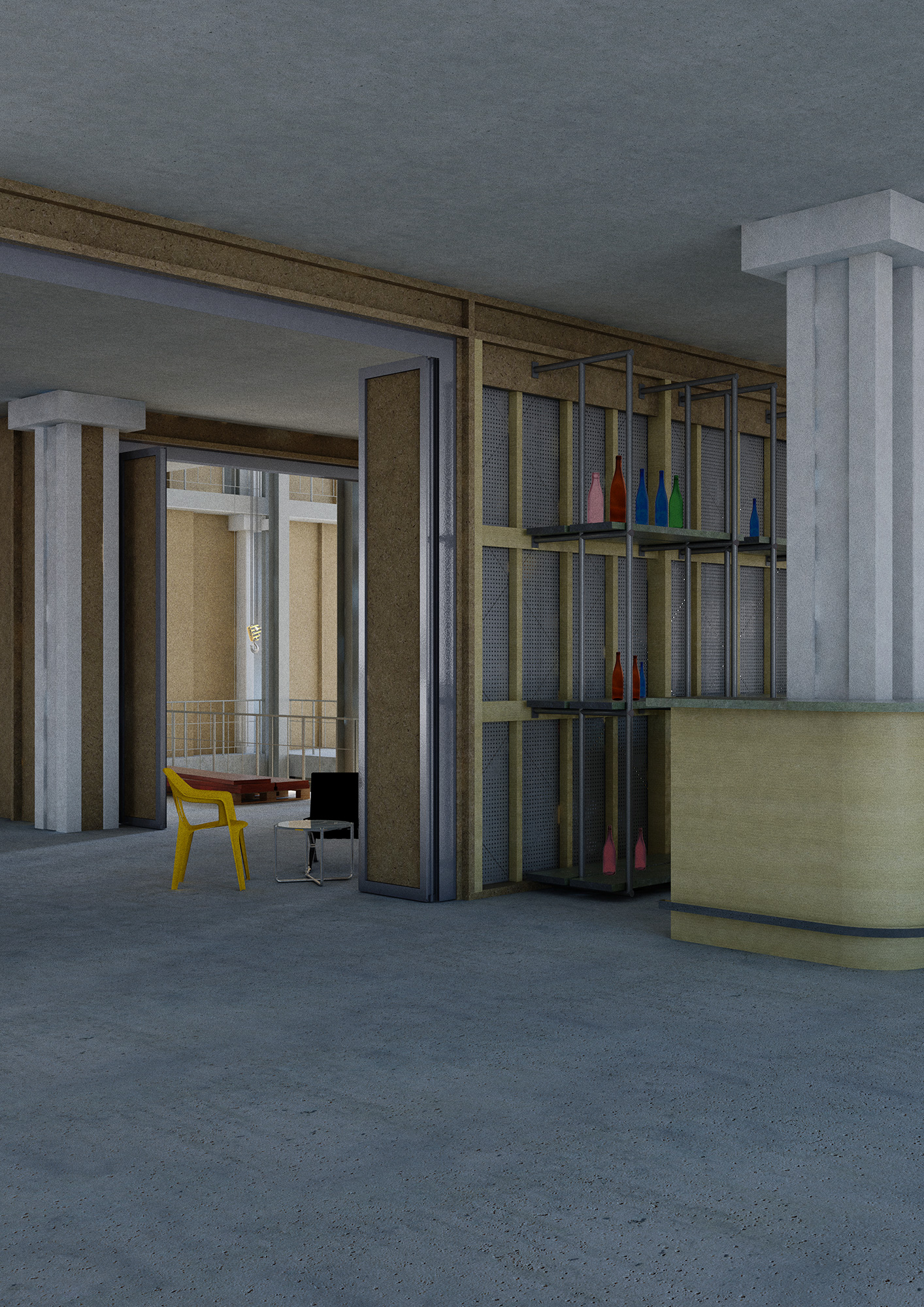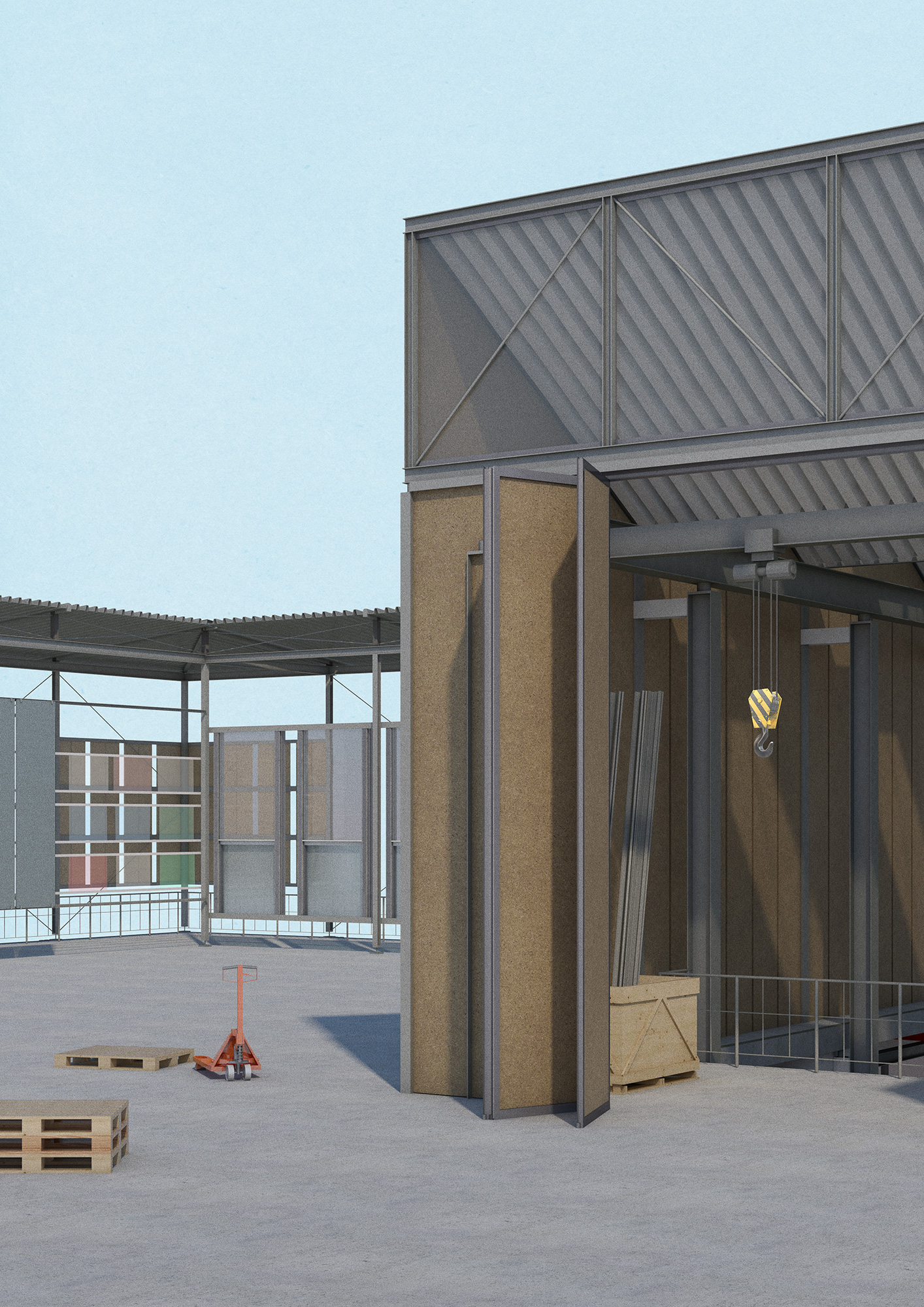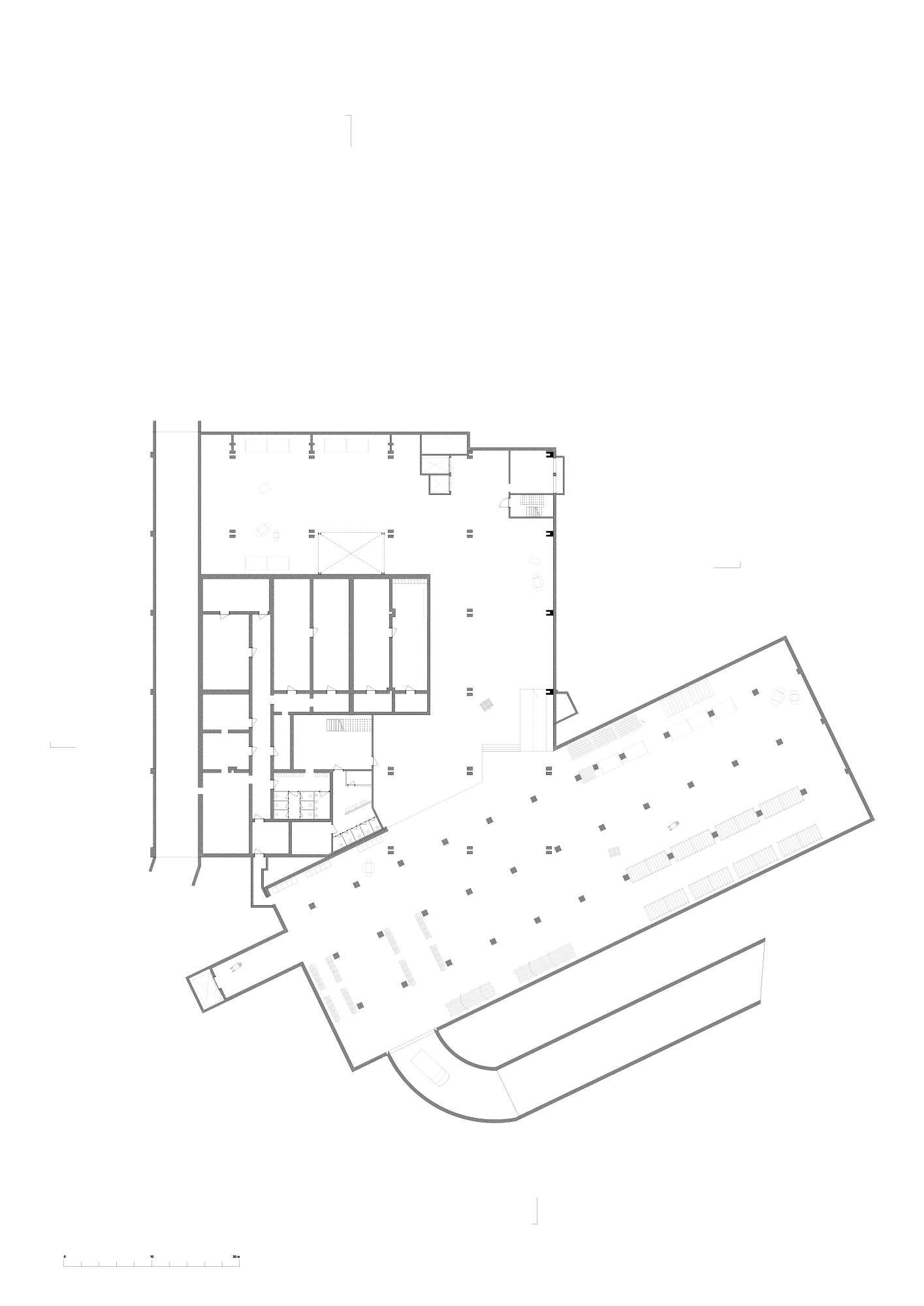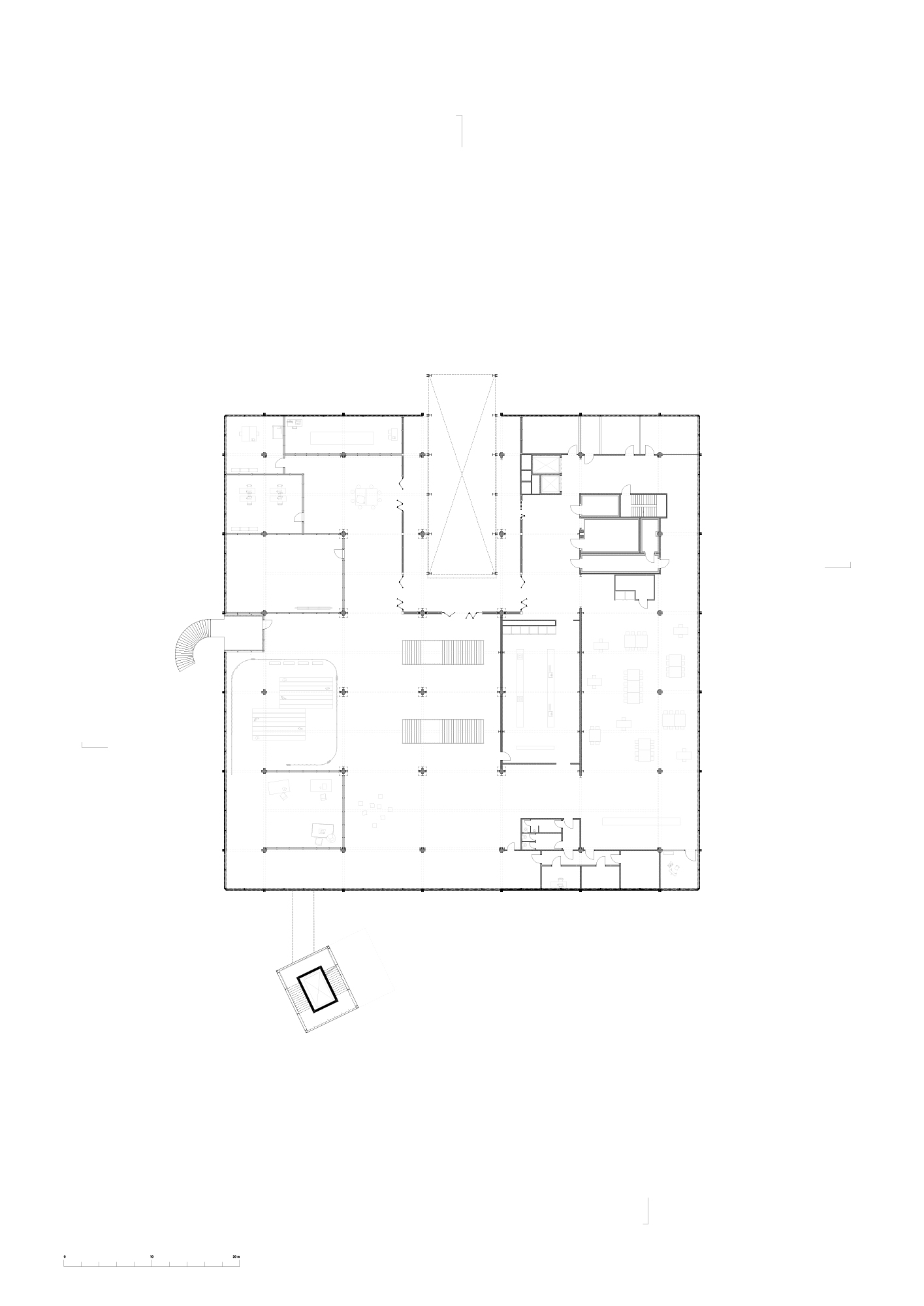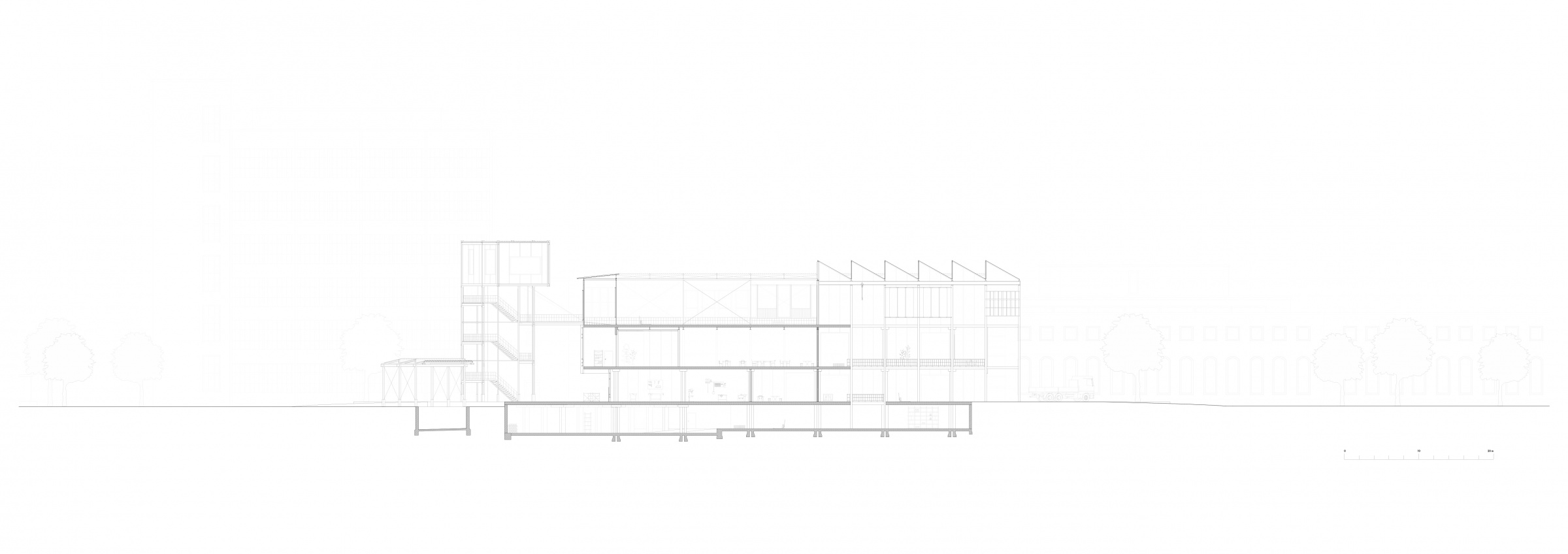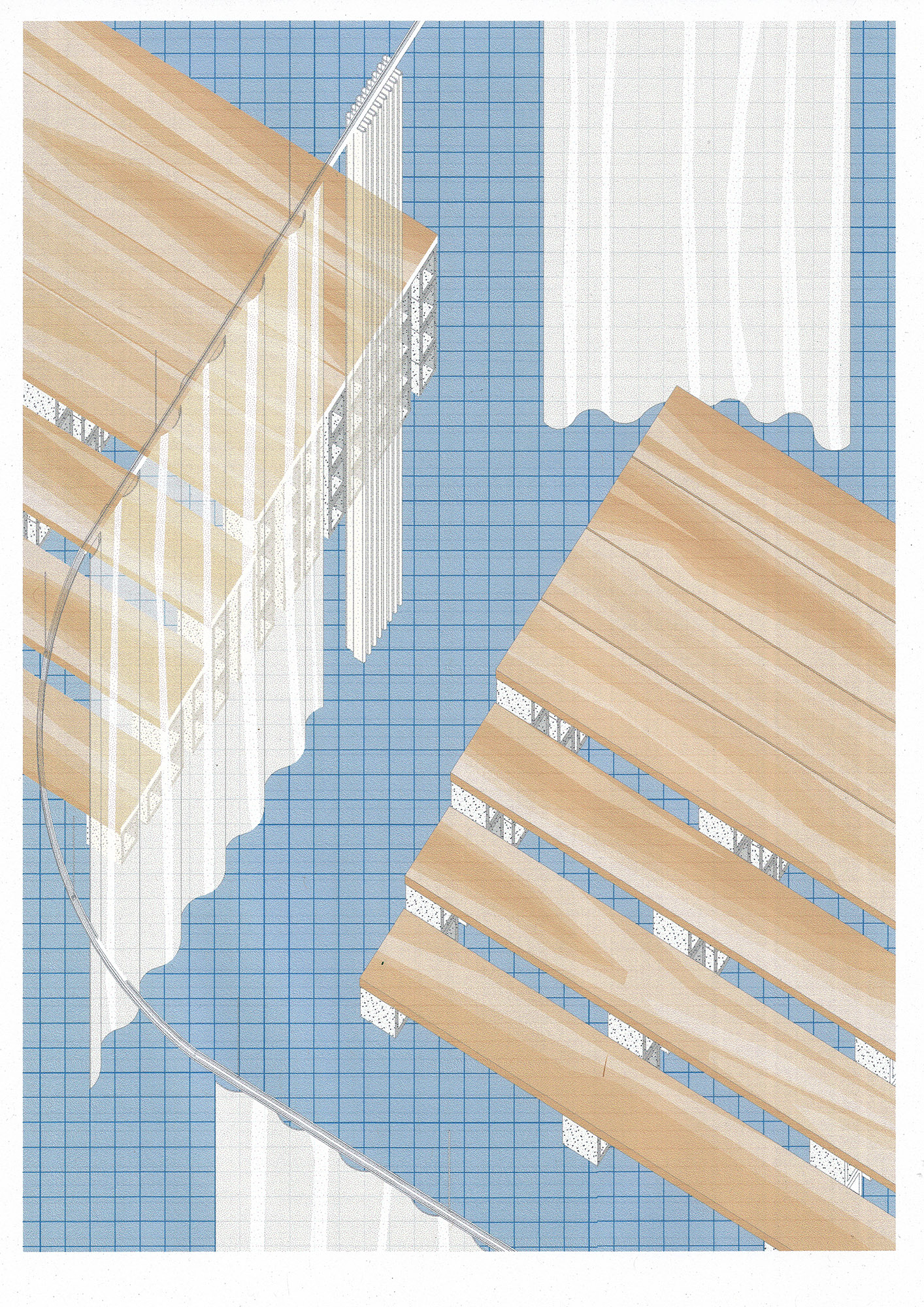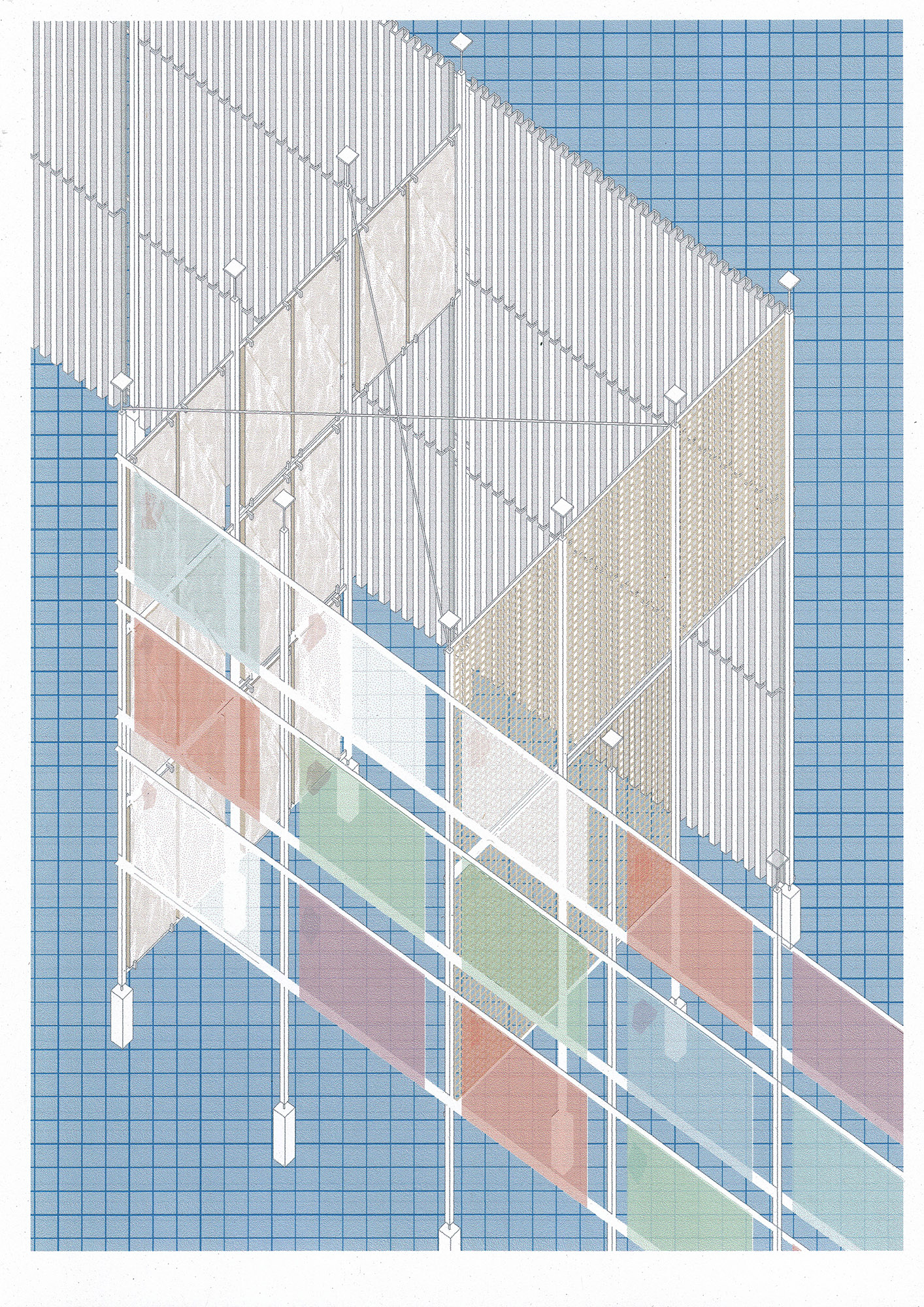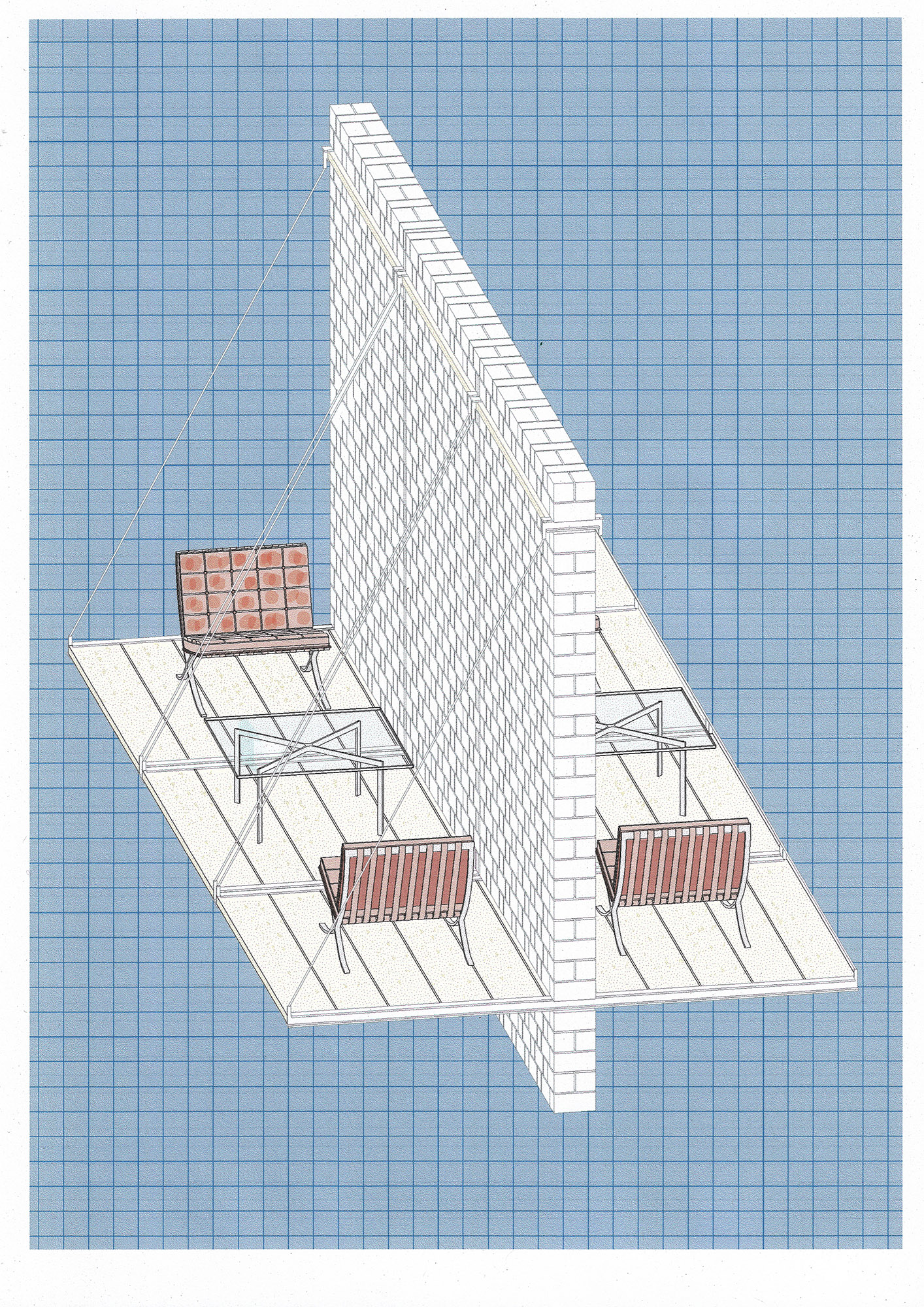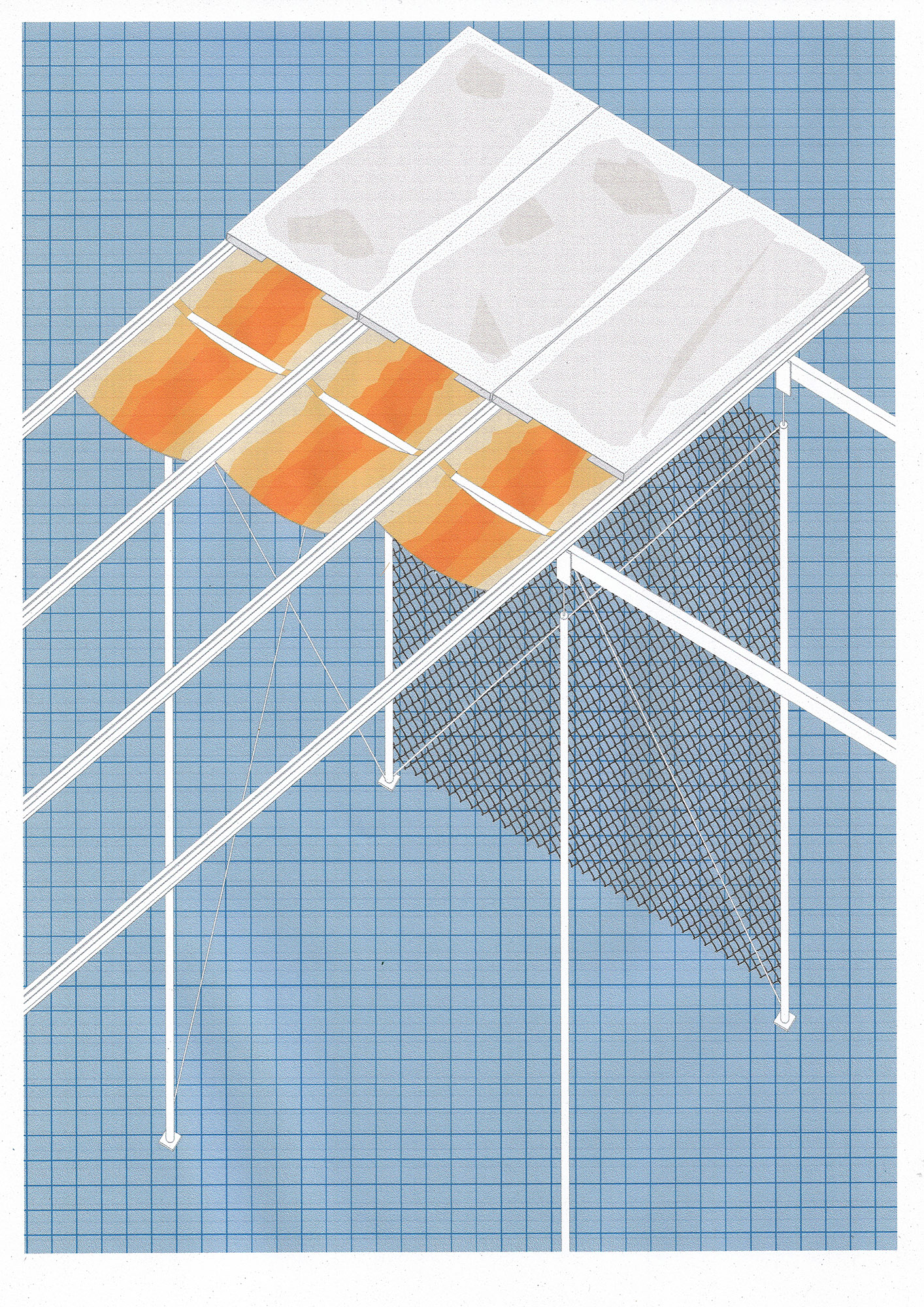The task of re-using Ciba triggered two main questions in me: Firstly, what meaning the term re-use could signify and comport and secondly, what constitutes the identity of a place.
The concept of circular economy possesses a high potential regarding the problems and questions of the CIBA areal. It is about thinking the economy in circular processes, i.e. sharing, leasing, reusing, repairing, reconditioning, and finally recycling products and materials. The average demolition of ten houses in Switzerland per day and construction waste’s share of four-fifths of the total Swiss waste proves how vital circular thinking is to future architecture.
By designing the component catalogue, we can give the materials used in the Ciba Buildings an identity and therefore seeing them as a resource. However, in addition to recognising the material value, the value of the work needed to produce the component must also be considered. A building component can be looked at as an accumulation of materials, working processes, assembling operations and production design steps.
The goal of the intervention is to turn the Bau610, the former canteen of CIBA, with minimal interventions in an accessible productive space. The main task of the building is the circulation, i.e. the access for city residents and the movement of the building components.
The building components of dismantled structures are delivered, stored, processed, and distributed again. For this purpose the roof and the basement are connected by a crane in the north and a stair tower with a goods lift facing south.
The new structures are „dressed“ by the ever-changing components stored in the building and display the material accumulation and continuous process.
In this project there isn’t a finished designed building but a proposal for a way of thinking about architecture and the built environment. Instead of production- and consumption-oriented architecture we should advocate circular processes in the architecture and the building industry.
To conclude with a quote of Thomas Hirschhorn, a contemporary artist that greatly inspired this design process : “It is not about re-using, it is about working with what is there”.


